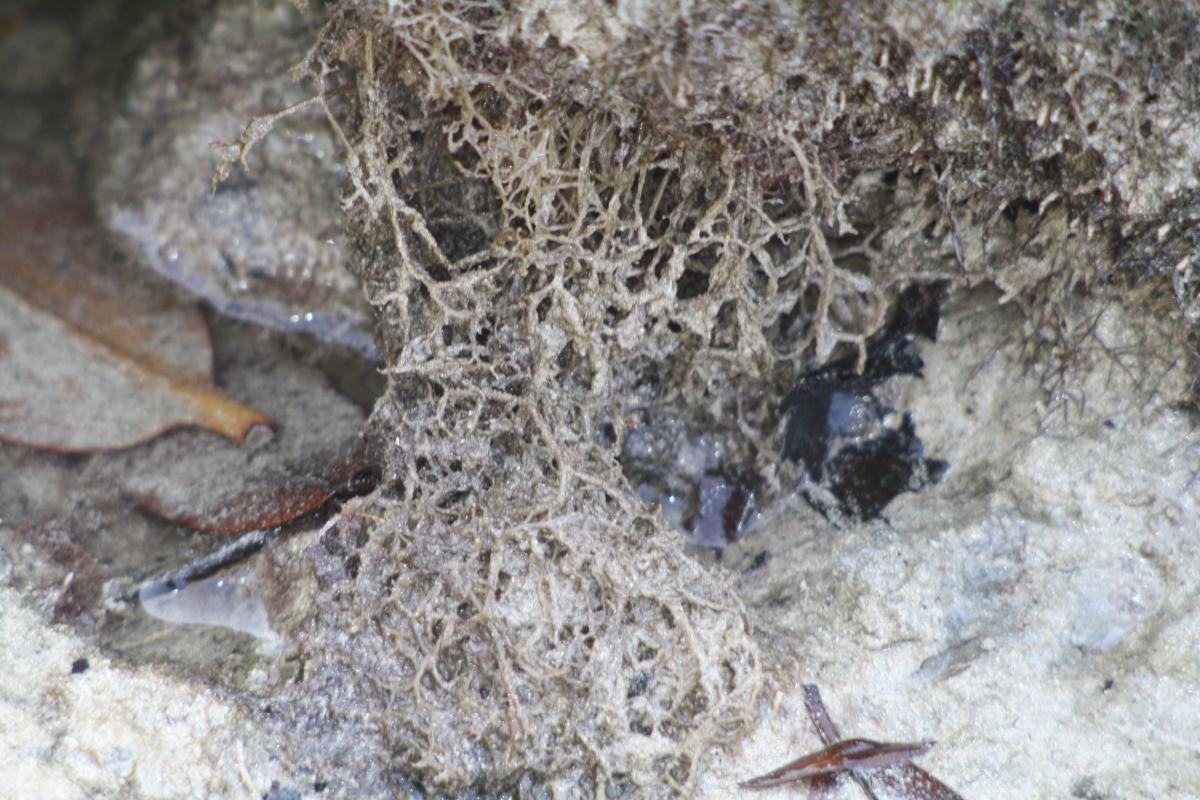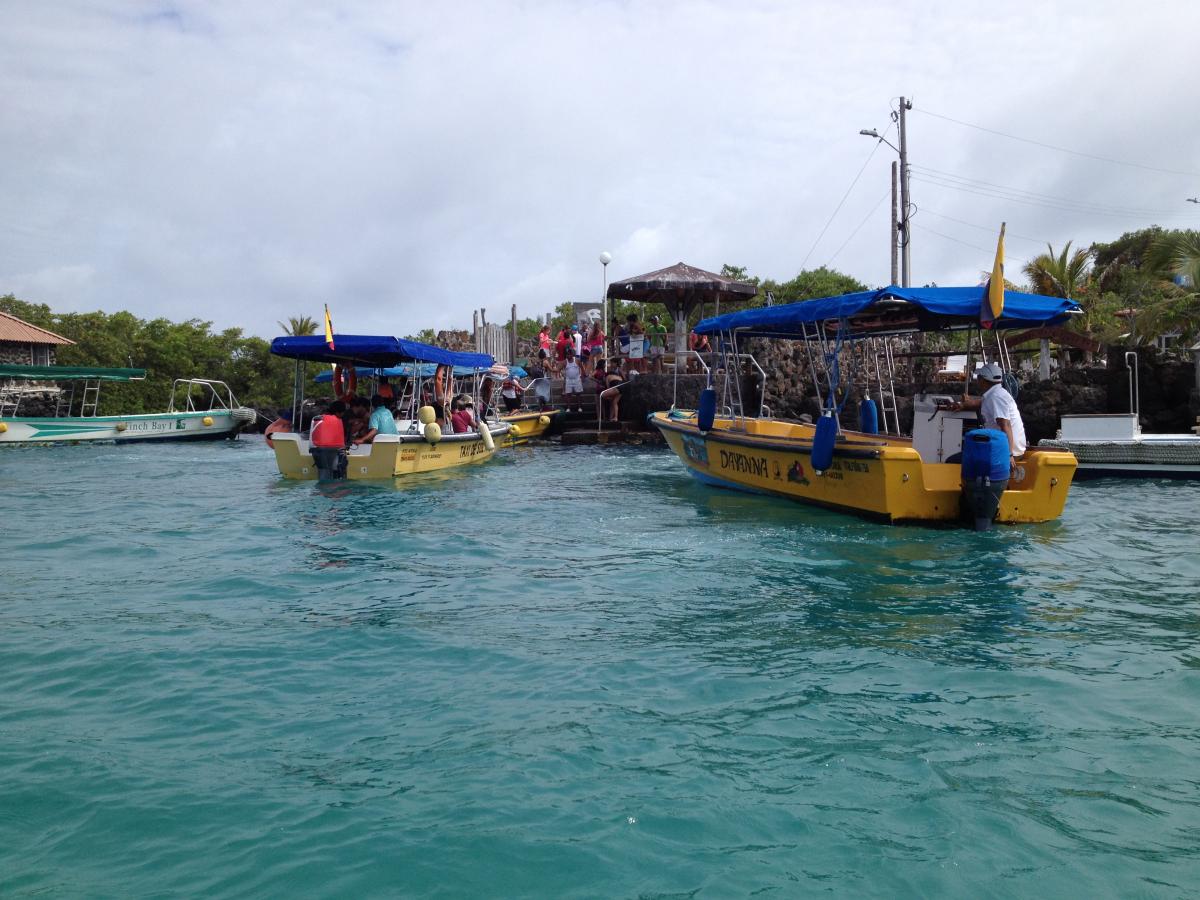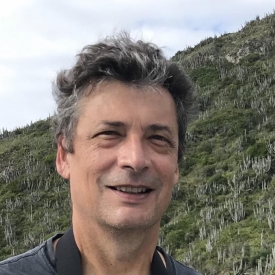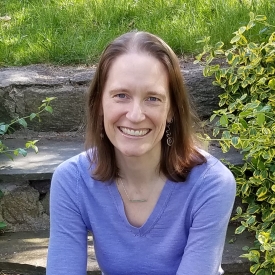
The spaghetti Bryozoan (Amathia verticillata species record) adds the Galapagos Islands to its long list of invaded regions. This species is particularly known for its massive size and fouling ability. As its name implies, it looks a lot like spaghetti, and early researchers gave it equally colorful descriptions, such as "clumps of freshly cut hay" (Robertson, 1921); "rope-like gelatinous strands" (WHOI, 1952); "lavishly branching ... tangled masses" (Osburn and Soule, 1953); "great tangled streamers" (Soule and Soule, 1968), "dirty strands of cellophane noodles" (Winston, 2004), and finally "large clumps of transparent spaghetti" (Soule et al., 2007).
In the Galapagos, Smithsonian researcher Linda McCann first discovered the noodle-like stands of this animal in 2015, near the town of Puerto Ayora on Santa Cruz Island, while participating in the first International Workshop on Marine Bioinvasions of Tropical Islands at the Charles Darwin Research Station. Linda was snorkeling in Tortuga Bay, a semi enclosed embayment on the south side of the island, when the discovery was made. During the workshop, a more detailed survey of the Puerto Ayora vicinity was undertaken with several additional scientists. They discovered the species in Franklin’s Bay, a second small embayment just outside of Puerto Ayora, but interestingly, the species was not found in Puerto Ayora, despite this being the main region of boat traffic on this island.

This unusual bryozoan had previously invaded the United States West Coast, where it was first detected in the early 1900s. It is so widely distributed that its native region is difficult to determine, but several regions are good candidates, including the Gulf of Mexico, Caribbean, and Southern part of the US East Coast. Published records of impacts are rare, but it has killed off sections of native seagrass beds in San Diego Bay, fouled boats in California, and clogged shrimp-fishing gear in Galveston Bay, Texas. See the details in NEMESIS.
The spaghetti bryozoan is a colonial animal made up of many individual zooids. The zooids feed by extending their tentacles into the water column and funneling food particles into their mouths. The zooids are hermaphroditic, meaning they have both male and female reproductive organs. They produce large yolky eggs that hatch into planktonic larvae. The larvae of this species doesn’t spend very long in the plankton. They usually settle on a hard substrate within hours. This bryozoan could have attached to floating debris rafting across the ocean, so natural dispersal to the islands can’t be ruled out, but the Galapagos are over 1000 km from the nearest continent. Thus, it seems likely that the species was transported to the Galapagos on a ship or boat hull. Many recreational vessels visit the Galapagos, from all over the world. The islands have seen a dramatic increase in tourism in recent years, and Puerto Ayora is a major hub for waterborne transportation throughout the island chain.

The potential for impact of the spaghetti bryozoan and other invaders to this world heritage site is of considerable concern and was a major focus of the recent workshop in Puerto Ayora. We don’t yet know whether this bryozoan occurs on any other islands in the Galapagos chain, as there are still limited surveys to evaluate the extent of marine invasions here. Smithsonian scientists plan to go back to the Galapagos in April of 2016 to do a more extensive survey of the island’s fouling communities, working with a team of local and visiting scientists to more thoroughly survey these spectacular marine communities and develop strategies to minimize future invasion risks.
This discovery was published in in BioInvasions Records (2015) by Linda McCann, Inti Keith, Dr. James Carlton, Dr. Gregory Ruiz, Dr Terence Dawson, and Dr Ken Collins.
References
McCann L, Inti K, Carlton JT, Ruiz GM, Dawson TP, and Collins K (2015) First record of the non-native bryozoan Amathia (=Zoobotryon) verticillata (delle Chiaje, 1822) (Ctenostomata) in the Galapagos Island. BioInvasions Records Volume 4 (in Press)
Osburn RC, Soule JD (1953) Order Ectoprocta, Suborder Cteno-stomata. In: Bryozoa of the Pacific coast f America. Part 3, Cyclostomata, Ctenostomata, Entoprocta, and Addenda. Allan Hancock Pacific Expeditions 14, pp 726–758
Robertson A (1921) Report on a collection of Bryozoa from the Bay of Bengal and other eastern seas. Rocords of the Indian Museum 22: 33-65
Soule DF, Soule JD (1968) Bryozoan fouling organisms from Oahu, Hawaii with a new species of Watersipora. Bulletin of the Southern California Academy of Sciences 67: 203–218
Soule DF, Soule JD, Morris PA, Chaney HW (2007) Bryozoa. In: Carlton JT (ed), Light and Smith Manual: Intertidal Invertebrates of Central California and Oregon. Fourth edition. University of California Press, Berkeley, pp 866–90
Soule JD, Soule DF, Abbott DP (1980) Bryozoa and Entoprocta: the moss animals. In: Morris RH, Abbott DP, Haderlie EC (eds), Intertidal Invertebrates of California. Stanford University Press, pp 91–107
Winston JE (2004) Bryozoans from Belize. Atoll Research Bulletin 523, 14 pp
Woods Hole Oceanographic Institution (WHOI) (1952) Marine fouling and its prevention. Contribution No. 580. United States Naval Institute, Annapolis, 388 pp



